You can’t miss the Acropolis when visiting Athens; you can see it from everywhere! Standing proud over the city, the Acropolis is the number one attraction in Athens. So, you know what that means? A lot of crowds! This ancient citadel, perched above the city on a limestone plateau, is a beacon of history, art, and civilization. For those drawn to the echoes of the past, a visit to the Acropolis promises a deep dive into the heart of Greek heritage, with the majestic Parthenon standing as its crown jewel.
We have been lucky enough to visit this amazing site three times and want to pass on our tips to help you have the best experience. So get ready to explore the ins and outs of making your Acropolis visit as epic and enlightening as possible, from dodging the crowds to uncovering the best views.
Table of Contents
What is the Acropolis?
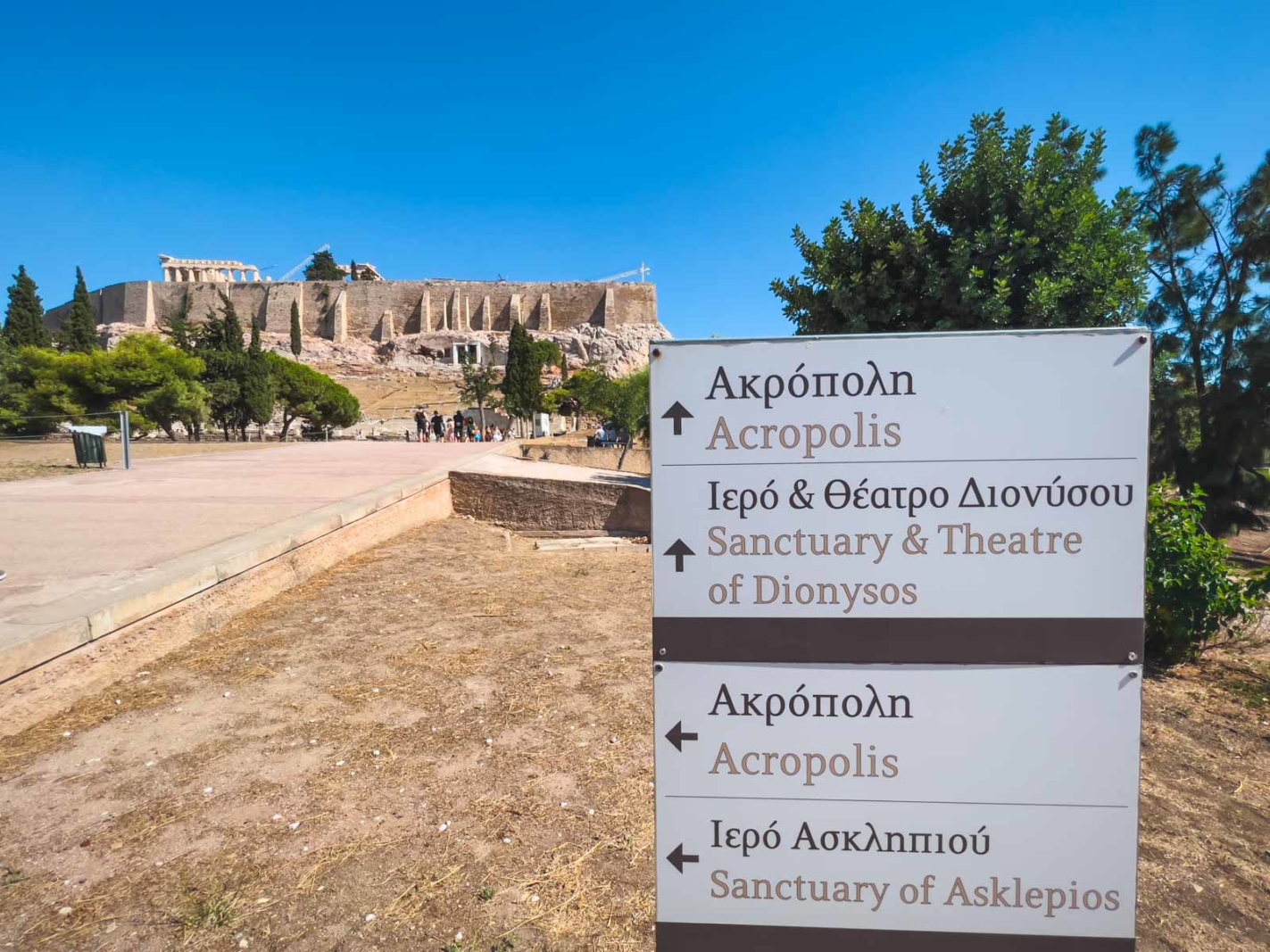
The Acropolis of Athens is a UNESCO World Heritage that stands as a beacon of the grandeur of ancient Greek civilization. Perched atop a 172 meter high rocky outcrop above the city of Athens, the Acropolis dates back to the 5th century BC, serving not only as a symbol of the power and culture of Athens but also as a pivotal monument in the development of Western civilization.
This historic site is home to several iconic structures, including the Parthenon, the Erechtheion, the Propylaea, and the Temple of Athena Nike. The Acropolis’s history is intertwined with the birth of democracy, philosophy, and the arts, making it a focal point for scholars and tourists alike to explore the origins of these fundamental concepts. An Acropolis visit offers a window into the ancient world and its enduring influence on modern culture and society.
Best Time to Visit Acropolis
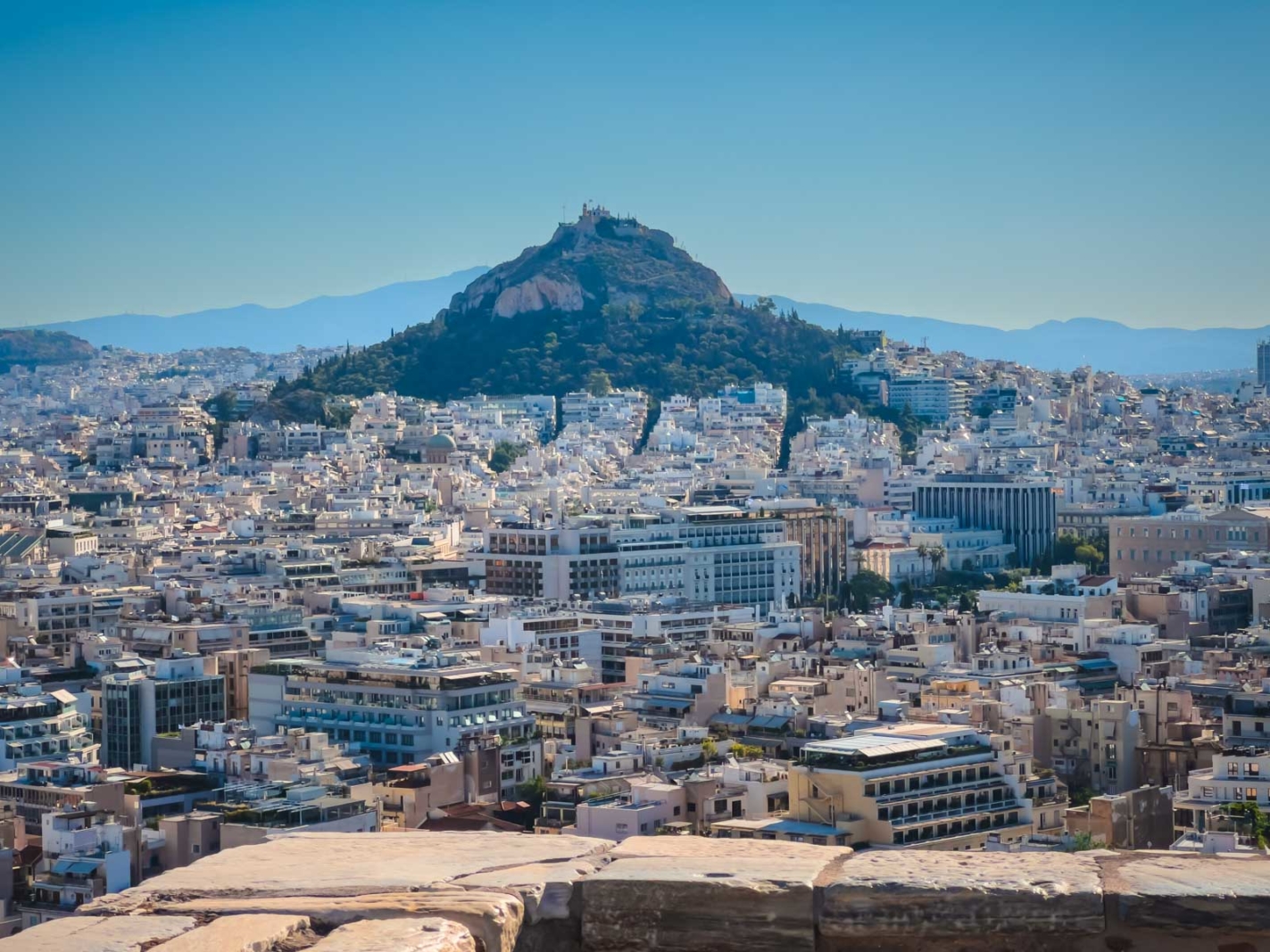
To avoid the throngs of tourists and the scorching sun, aim for an early morning or late afternoon visit. The Acropolis opens its gates at 8:00 AM, so getting there right at opening time can give you a cooler and somewhat more private experience. We walked from our hotel at sunrise to make it for the first slot at the opening; as soon as the guards came down, we rushed ahead to the entrance to be first up without any crowds.
If you can’t make it for the first time slot, we suggest visiting an hour or two before closing, which allows you to enjoy the golden hues of sunset casting a magical glow over the ancient stones. Plus, all of the organized tours and tour buses will be gone by then.
Tickets and Timed Entry to the Acropolis
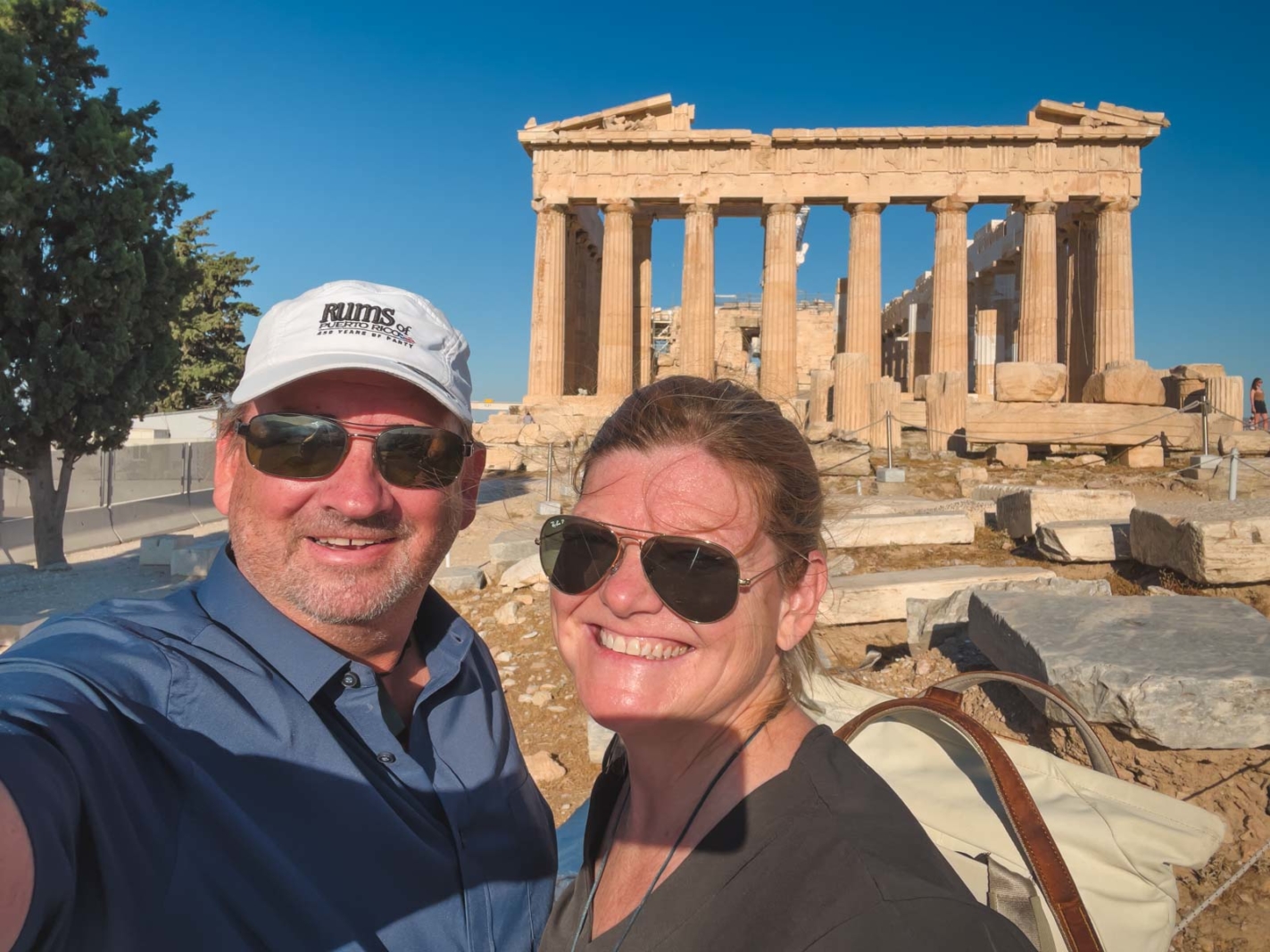
Since our last visit to the Acropolis, the city of Athens has made visitors select a mandatory timed entry. When booking tickets, you can choose the time and date that you want to enter. And lucky you, you can enter the Acropolis 15 minutes before (or after) the time of your choice. We suggest booking as early as possible because, naturally, the crowds will be larger as the day goes on, with people lingering on the Acropolis grounds long after their timed entrance.
You can book tickets in advance with Get Your Guide. We highly recommend booking 8 am to see the military march down after raising the flag and to be the first on the Acropolis grounds. We were first up the stairs and had the Acropolis all to ourselves!
Combo Tickets – Planning Your Visit to the Acropolis
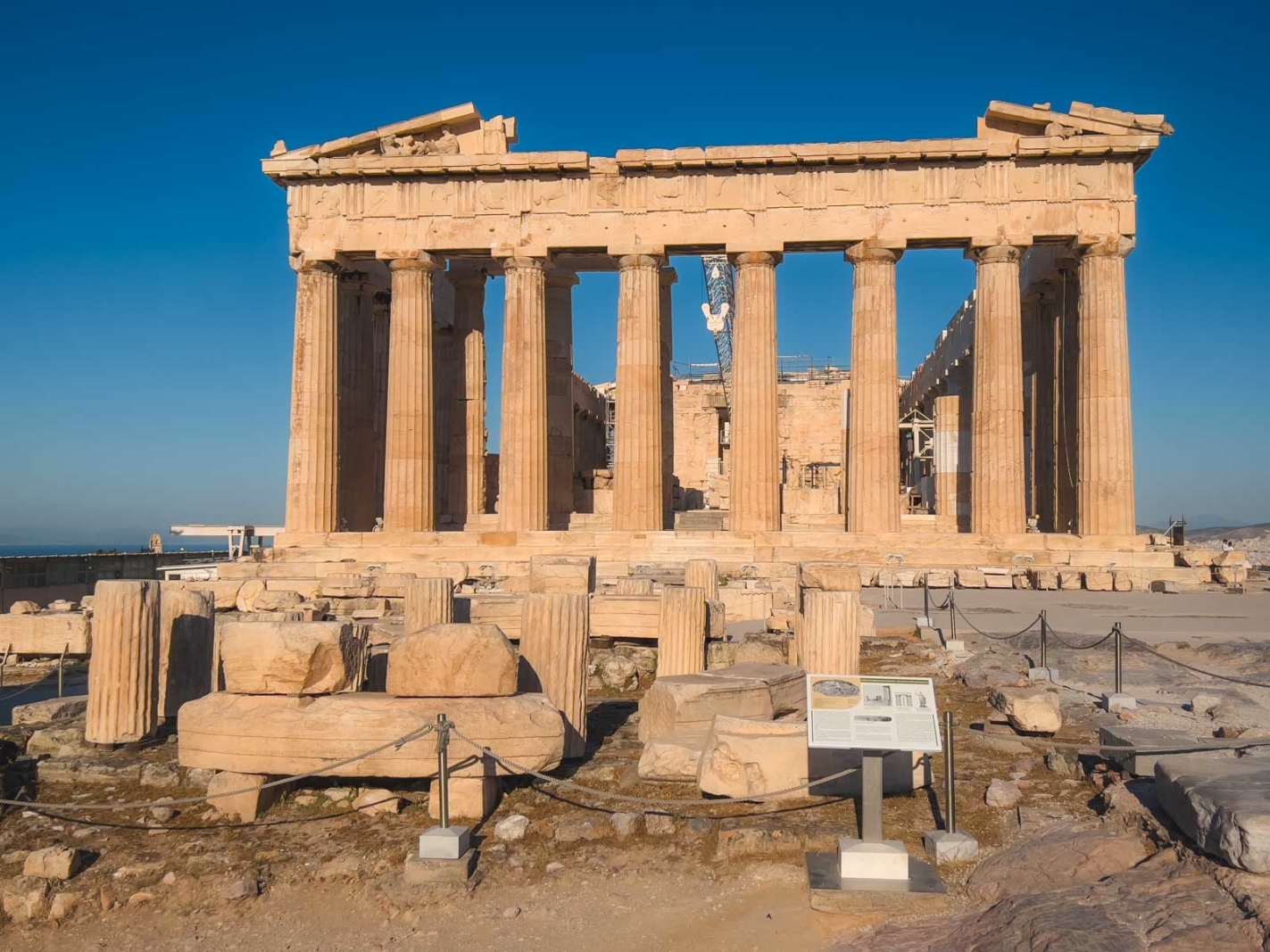
An Acropolis visit doesn’t have to break the bank, a standard entry ticket costs around €20, with reduced rates available for students and seniors. Prices can fluctuate, especially by season and combined tickets that include entry to other historical sites in Athens, so it’s worth checking the official website for the latest information. Purchasing tickets online in advance can save you time and spare you the hassle of long lines. You can book Acropolis tickets in advance here with an audio tour included.
We visited the Acropolis using the Acropolis plus Six Archeological Sites Combo. This is the best ticket for first-time visitors to Athens. It includes not only the Acropolis but also entry to the Roman Agora and Ancient Agora, as well as Aristotle’s School and the Keramikos Ancient Cemetery. Plus, access to Hadrian’s Library and the Temple of Olympian Zeus. Details here.
Opening Hours: Timing Your Adventure
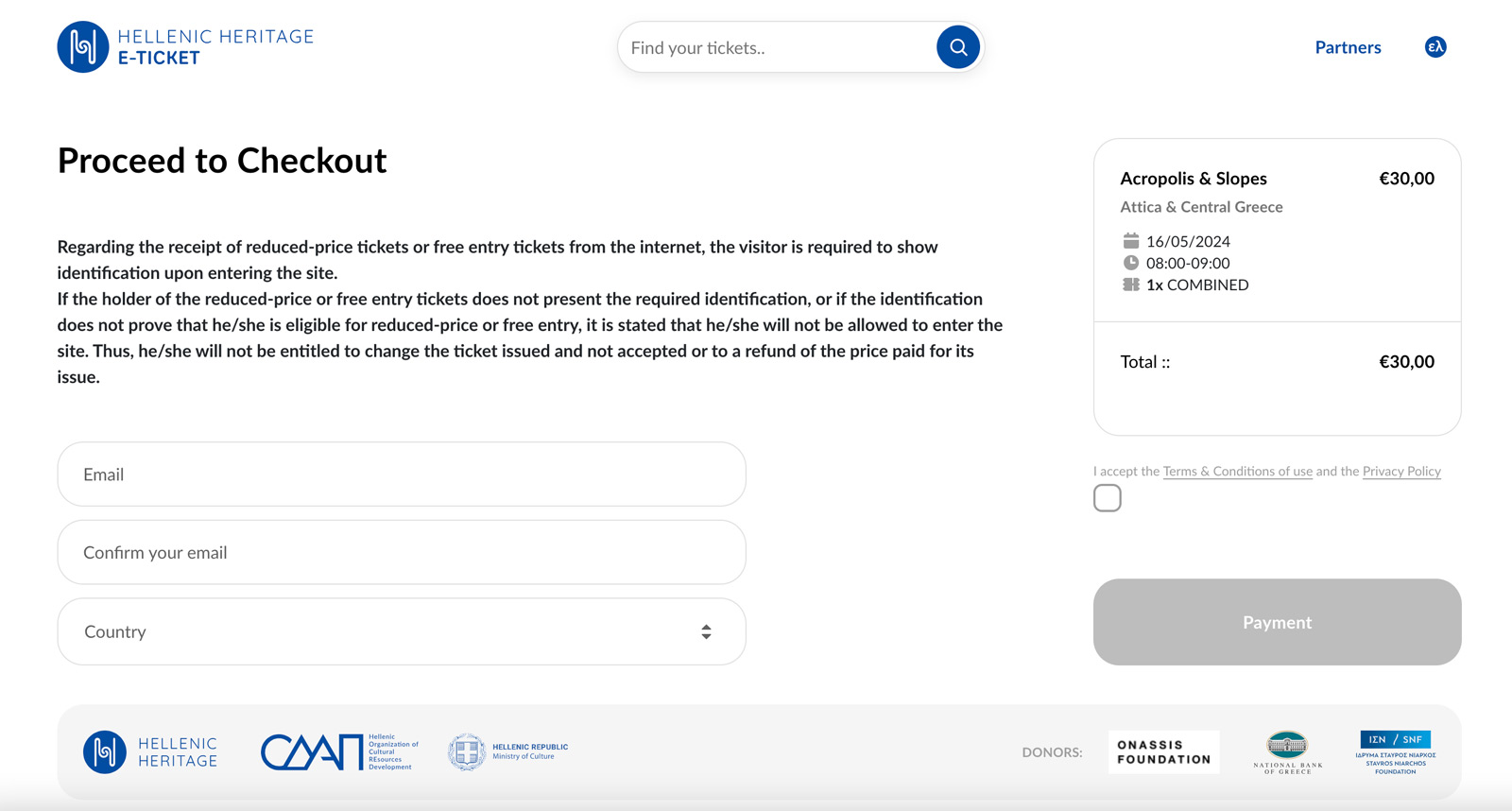
The Acropolis is open daily from April to October from 8:00 AM to 8:00 PM, offering ample time to explore.
Winter hours shorten a bit, so plan accordingly. Remember, the last entry is usually an hour before closing, so give yourself plenty of time to wander and wonder.
Recommended Route and Where to Enter the Acropolis
We entered the Acropolis at the The Propylaea which is the most popular Acropolis entrance. If your timed entrance is first thing in the morning, we highly recommend this entrance as you will be first to see the Parthenon free from crowds.
If your entrance is later, start your visit at the Theatre of Dionysus, then move up to the Asclepieion and the Odeon of Herodes Atticus. Continue to the Propylaea, the monumental gateway that leads to the top of the Acropolis, where you can explore the Parthenon, the Erechtheion, and the Temple of Athena Nike. This route offers a logical progression through the site and ensures you don’t miss the highlights.
Highlights of Your Acropolis Visit
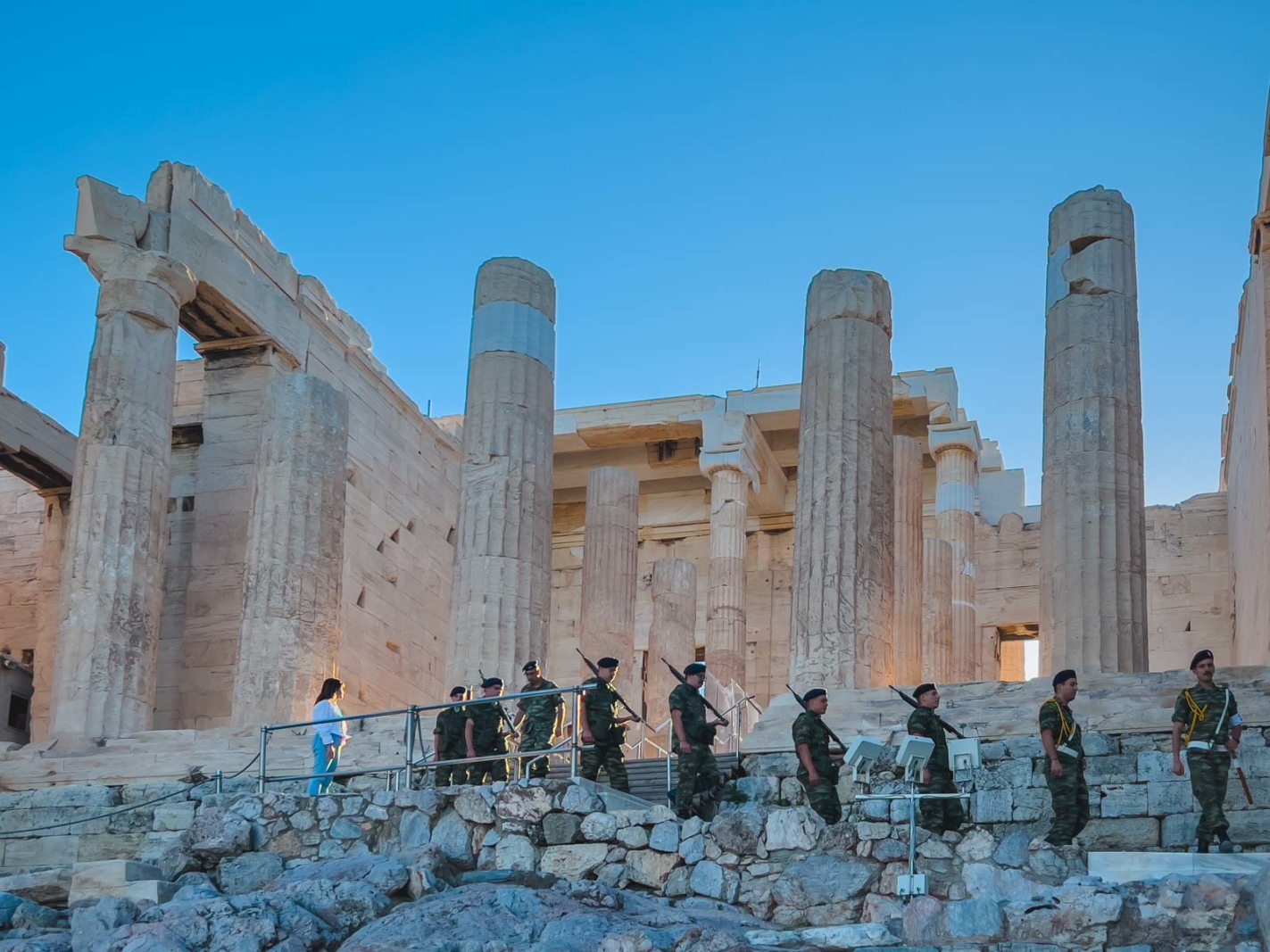
You cannot come to Greece without visiting the Acropolis. Athens is one of the world’s oldest cities, and the Acropolis has stood high above the city for more than 2,500 years. Many people think that the Parthenon is the Acropolis, but the Acropolis is actually an entire complex at the center of the citadel.
The Acropolis is considered one of the greatest architectural wonders in the world. There are many things to keep an eye out for during your visit, so let’s take a look at some highlights.
The Parthenon
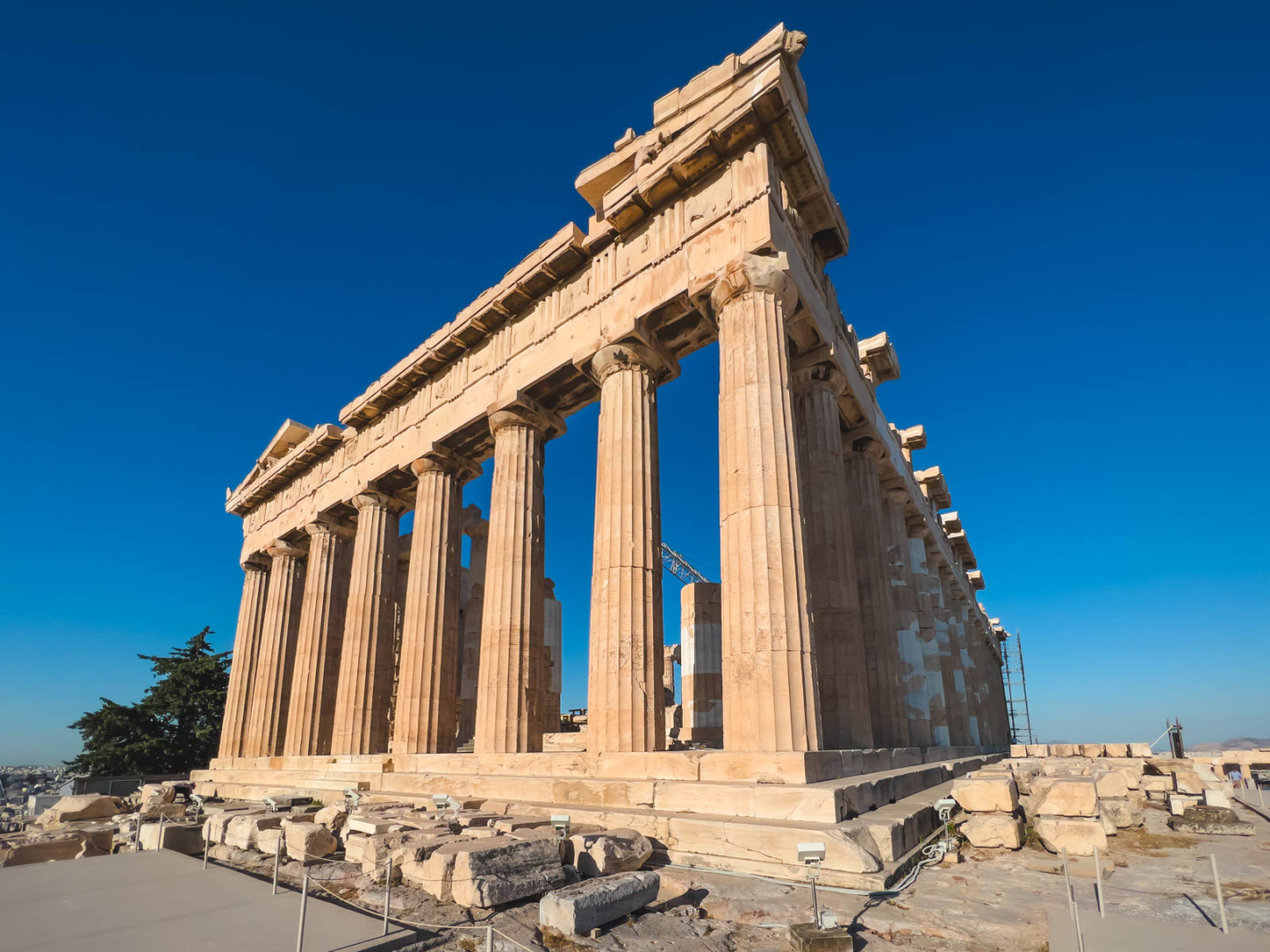
A “visit to the Parthenon” is non-negotiable. This temple, dedicated to Athena, the goddess of wisdom and war, is the epitome of Doric architecture and a symbol of the glory of ancient Athens. Its size, harmony, and the precision of its construction are a testament to the ingenuity of its creators.
The Parthenon is the most famous of the ancient ruins of Acropolis. It is the symbol of democracy dominating the hill of the Acropolis and dates back to the 5th century BC. But the Acropolis is filled with archeological wonders besides the Parthenon. On the grounds, you will also see The Temple of Athena Nike and the Odeon of Herodes Atticus theatre.
Other temples to visit are the Propylea Temple of Nike, the Erechtheion Temple and you must see the Dionysus Theater. I learned of this theater while studying Greek Tragedies in theatre school, and it was amazing to see this famous theater. Also, don’t miss seeing the Odeon of Herodes Atticus and the sanctuary of Asclepius.
The Propylaea
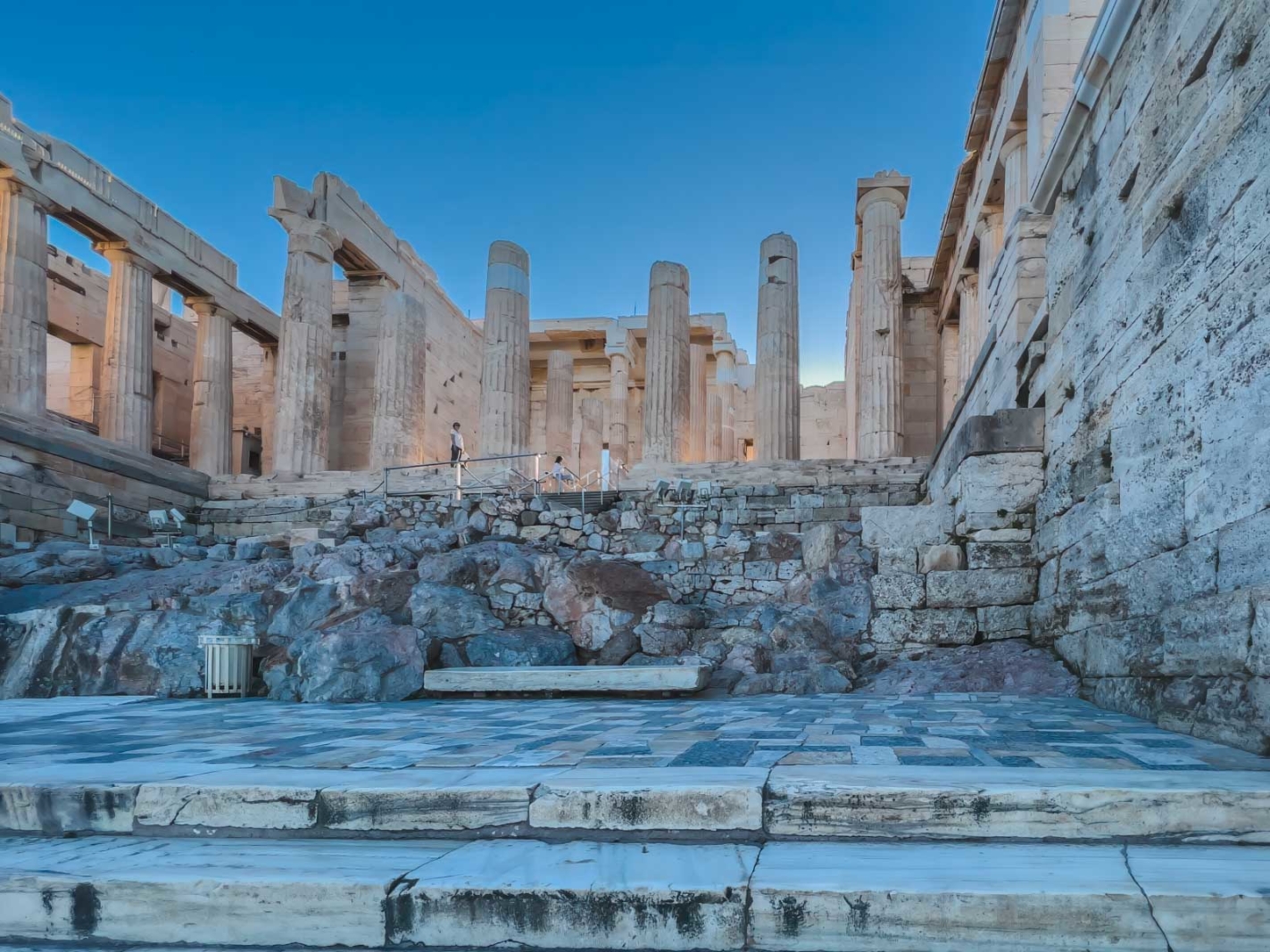
The grand entrance to the Acropolis sets the stage for what lies beyond. Walking through the Propylaea is like stepping back in time, with each step taking you closer to the heart of ancient civilization.
As you ascend the majestic pathways leading to the heart of the Acropolis, the Propylaea stands as a monumental gateway, inviting visitors into the ancient world’s most revered sanctuary.
Constructed between 437 and 432 BC under the guidance of the architect Mnesicles, the Propylaea was envisioned as a grand entrance, symbolizing the transition from the mortal world to the divine abode of the gods. Its architectural grandeur, with Doric columns and a meticulous design that balances aesthetics and function, captures the essence of Athenian democracy and artistic excellence.
Walking through this historic portal, one can almost hear the footsteps of ancient philosophers, statesmen, and pilgrims who entered the Acropolis with awe and reverence.
The Erechtheion
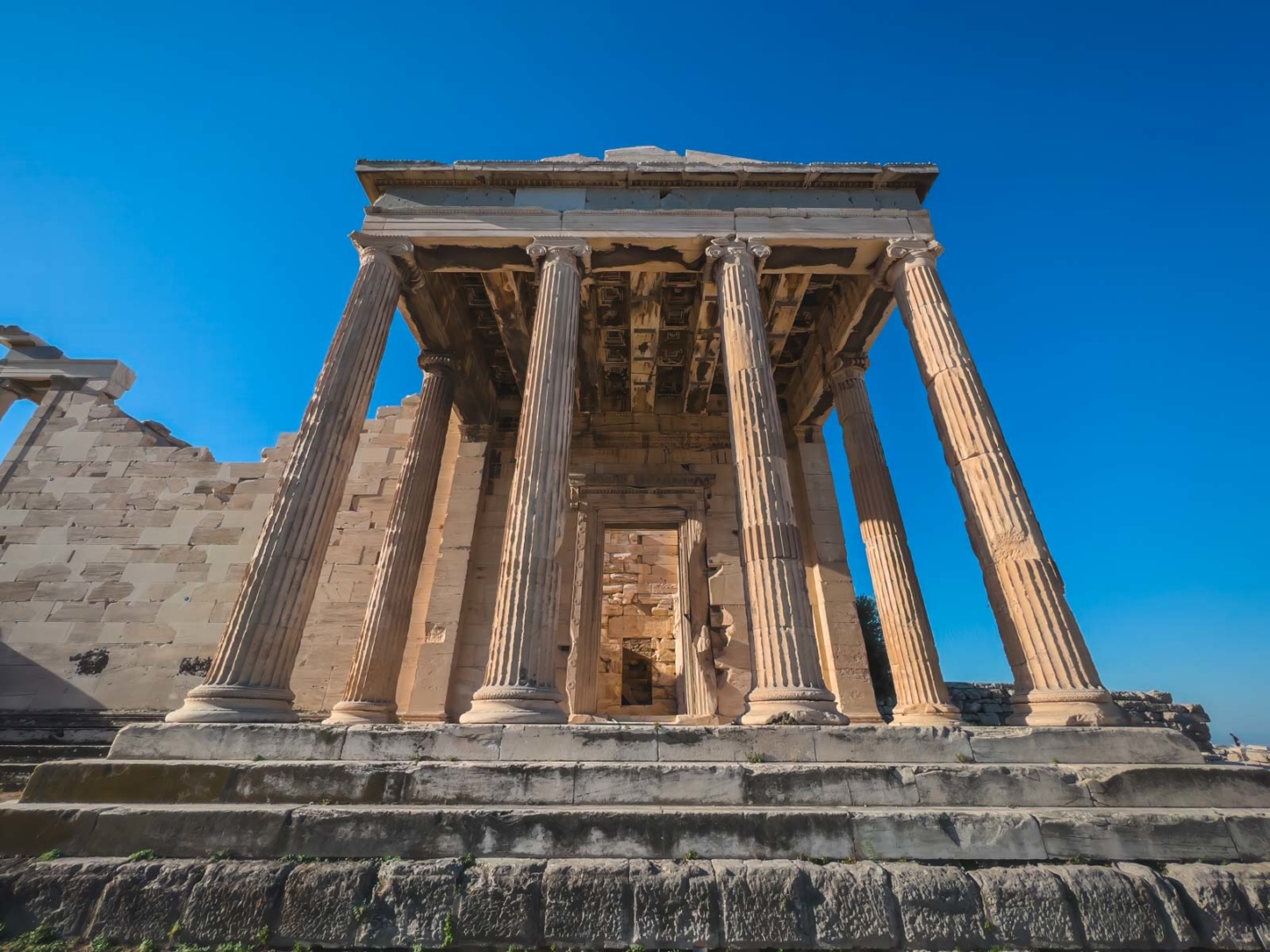
Located across the grounds from the Parthenon the Erechtheion is an exquisite temple, dating back to 421-406 BC. It stands out for its unique structure, the famous Porch of the Caryatids, where six gracefully carved female figures serve as architectural supports in place of traditional columns.
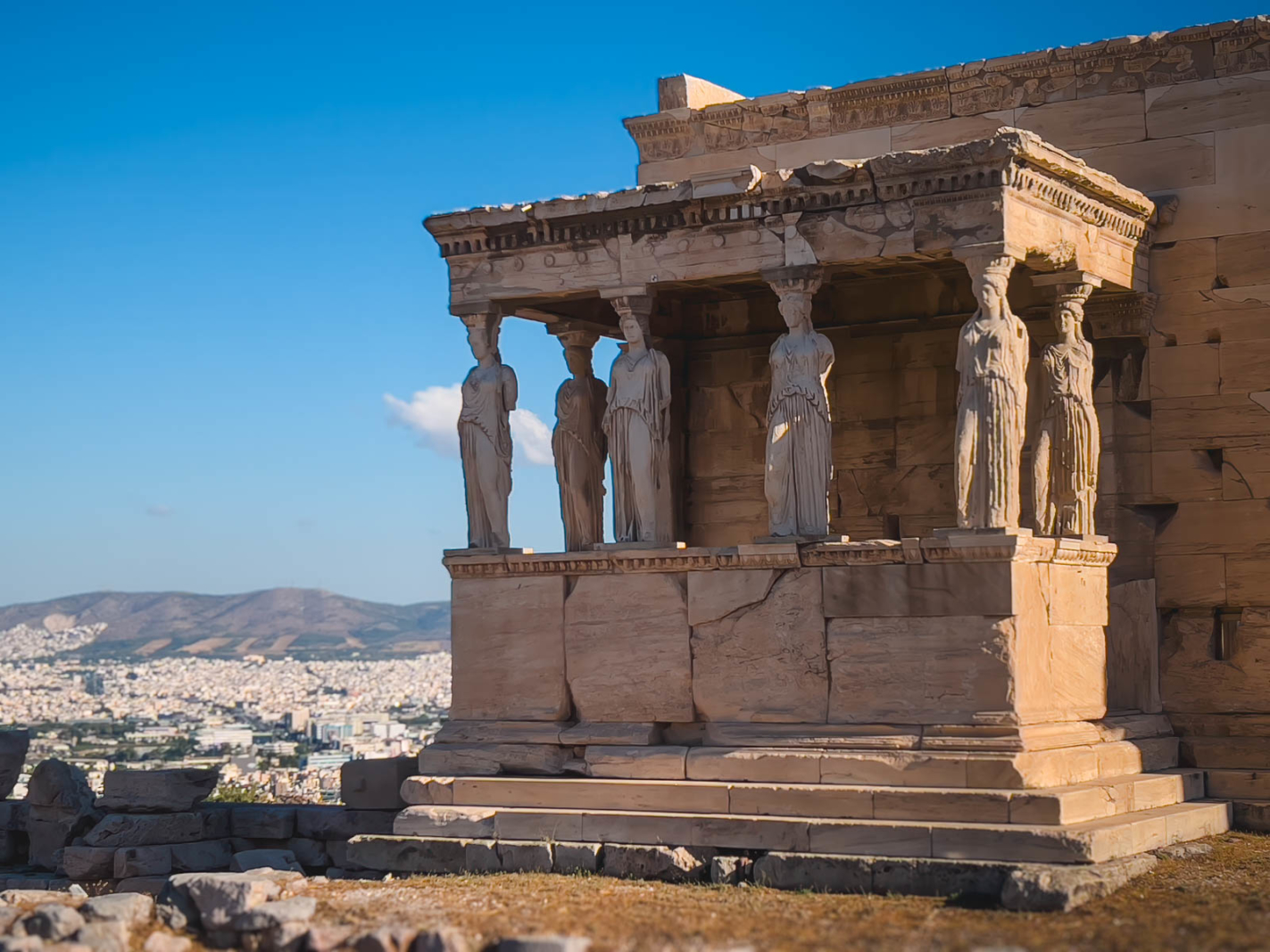
This temple, built to honor both Athena and Poseidon, hosted a sacred olive tree and a saltwater well that symbolized the contest between the two gods for the patronage of Athens. You will also want to visit Poseidon’s Temple when in Athens.
For those exploring the Acropolis, a visit to the Erechtheion is essential, offering insights into the complexities of Athenian worship and the architectural innovations that have influenced Western culture for centuries.
The Temple of Athena Nike
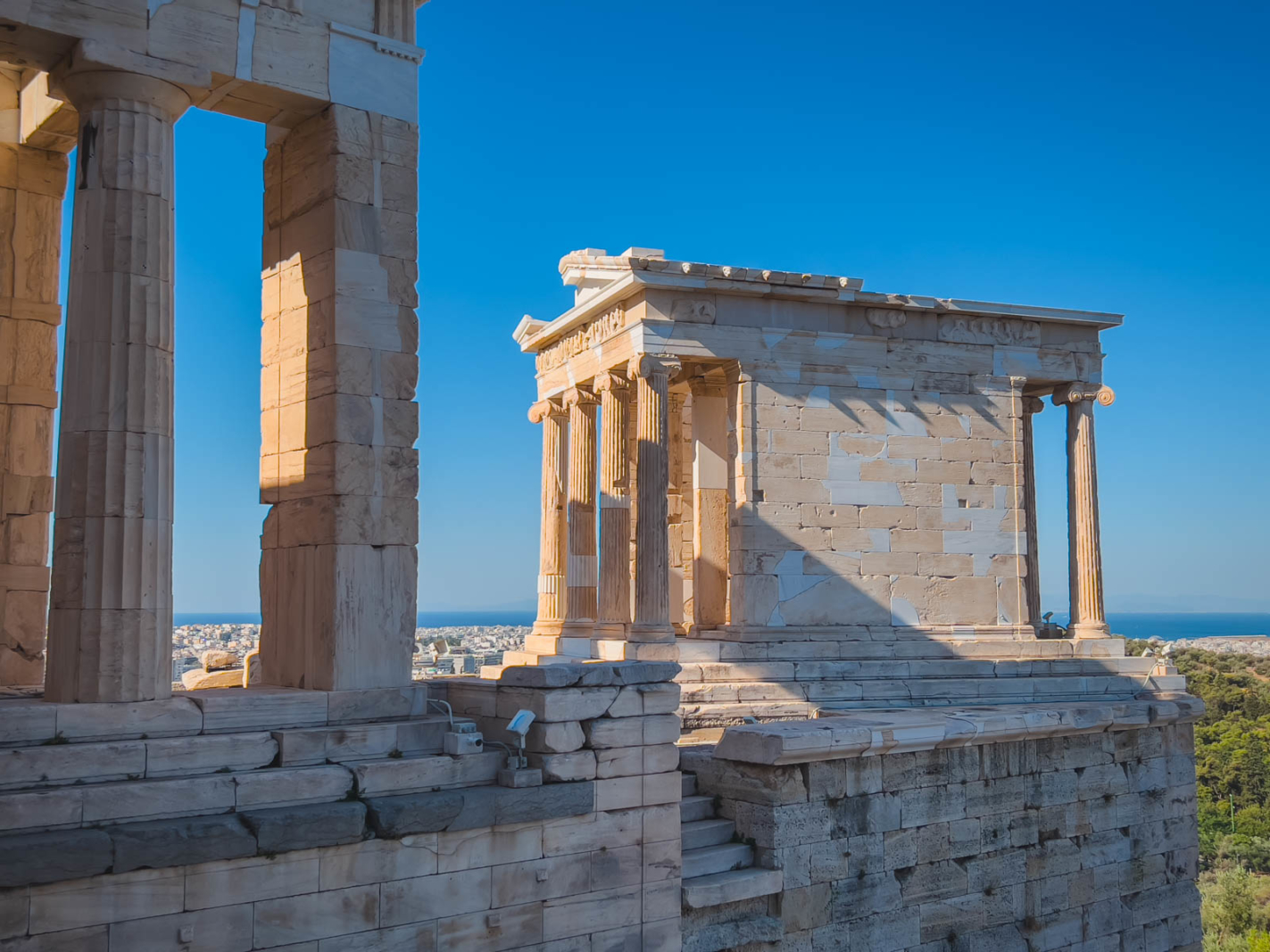
The Temple of Athena Nike is my personal favorite. It is a temple dedicated to the Goddess Athena and Nike Goddess. Athena Nike may be the smallest of the temples of the Acropolis, but I love its location, which is standing on the edge of a high cliff.
This small yet significant temple is a beautiful example of Ionic architecture. Its delicate proportions and intricate details capture the eye and the imagination.
Odeon of Herodes Atticus
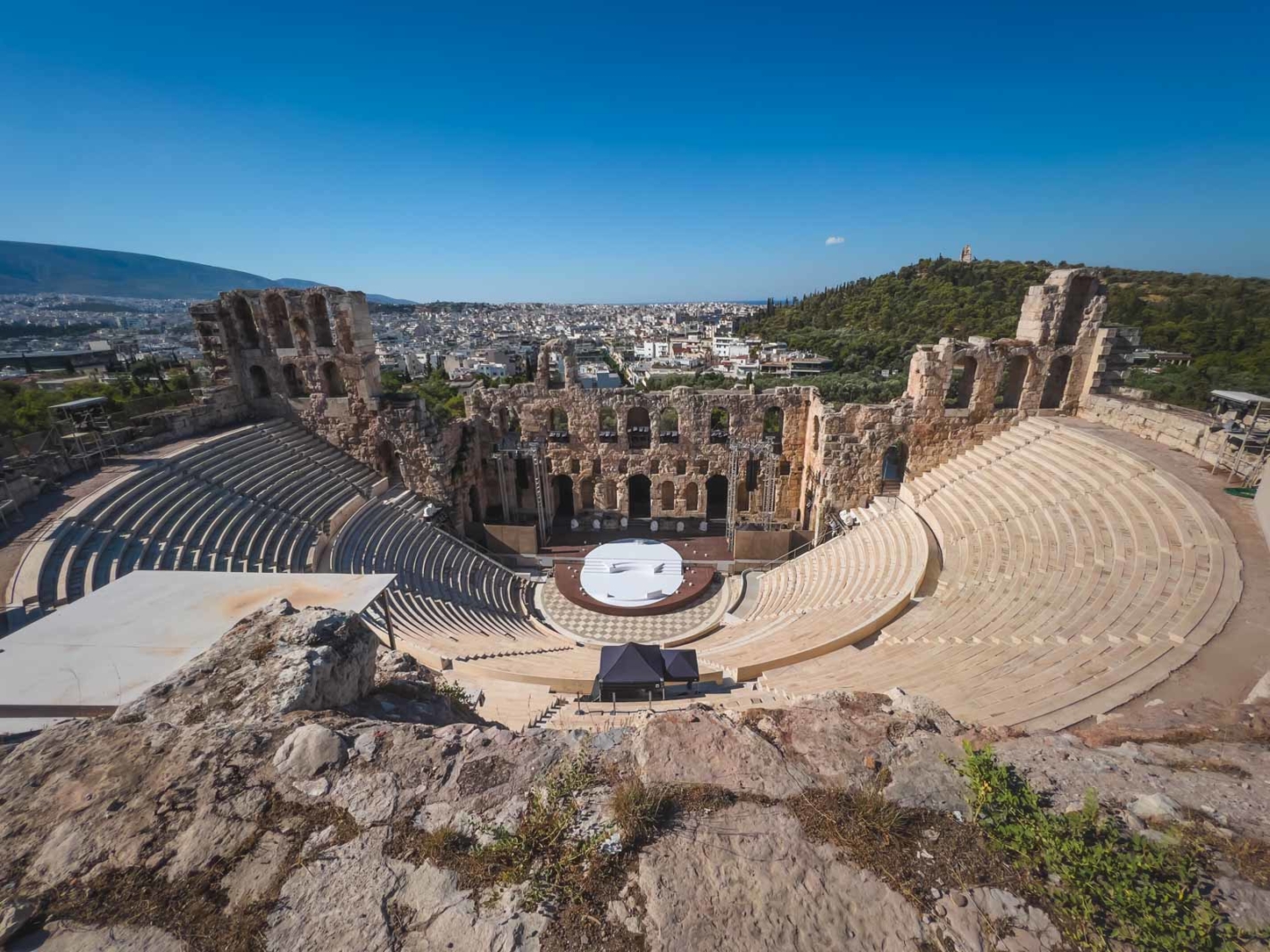
Odeon in ancient Greece was a building for singing and musical shows. In Athens, the Odeon of Herodes Atticus is the theatre that sits at the base of the Acropolis. To this day, it hosts world-renowned artists, such as the Foo Fighters in 2017 and Sting in 2018. See details of events at the Odeon here.
And did you know that it is still in operation? It is a once-in-a-lifetime experience to watch a concert in the oldest of venues among ancient ruins. The Odeon of Herodes Atticus is not only historic and intimate, but every seat offers great views of the stage. As part of the Epidaurus Festival every summer, the Odeon hosts dozens of concerts. Don’t be afraid to attend theatre events! Unless noted specifically, theater shows will have English subtitles.
Theater of Dionysus
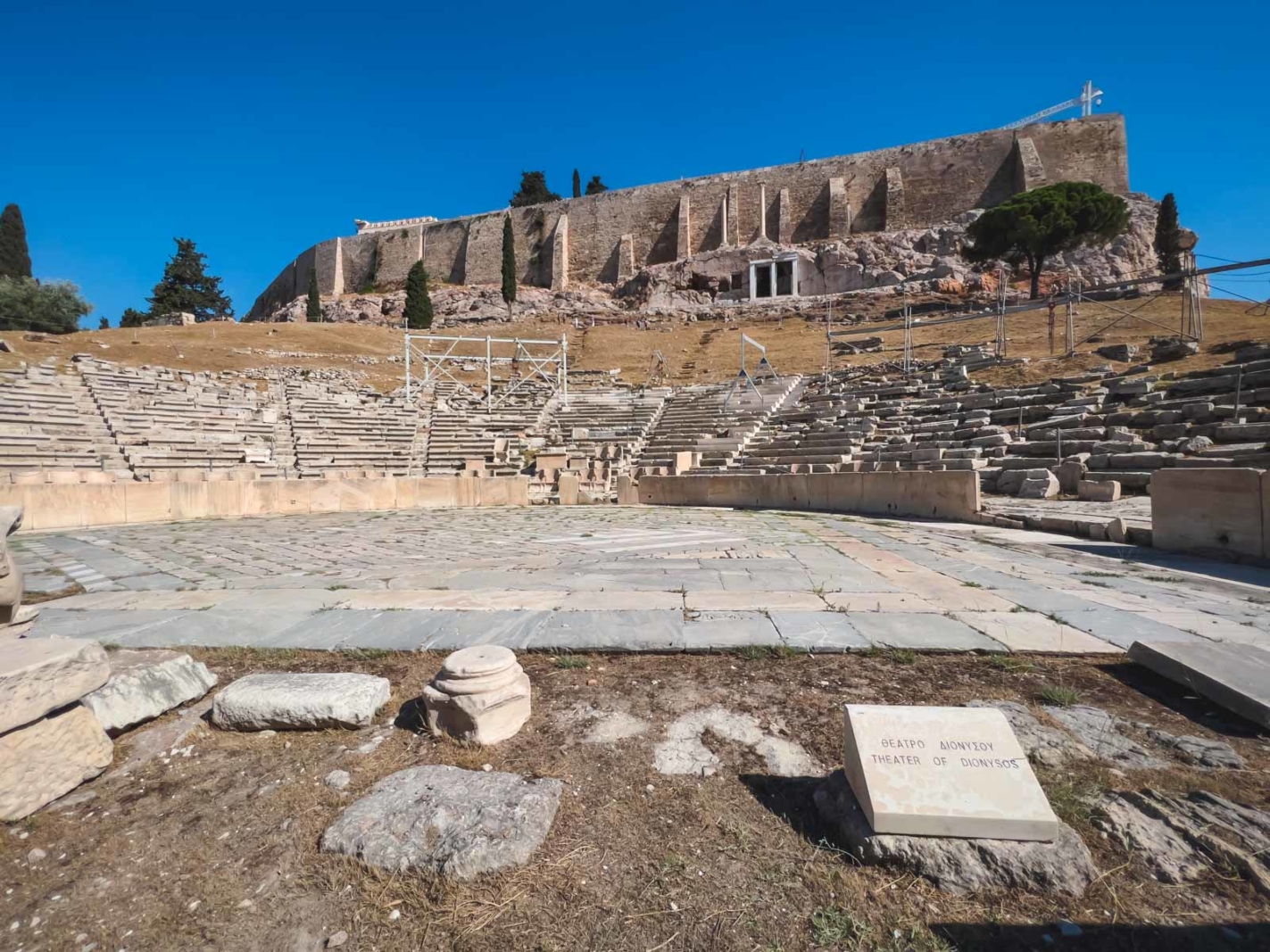
Nestled on the southern slopes of the Acropolis, you will pass the Theater of Dionysus on your way down. Make sure to stop and take a look, as you can get very close to its seats and on its stage.
As the birthplace of European theater, this historic site dates back to the 5th century BC and holds the distinguished title of being the world’s first theater.
It was here that iconic playwrights like Sophocles, Euripides, and Aristophanes debuted their timeless works to audiences of up to 17,000 people. The remnants of the theater, including its marble thrones and orchestra circle, whisper tales of a bygone era where art and democracy were in their nascent stages.
For those journeying through the Acropolis, pausing to immerse oneself in the atmosphere of the Theater of Dionysus is essential, offering a unique glimpse into the cultural heartbeat of ancient Athens. Stepping into the Theater of Dionysus, visitors are transported back to a time when drama and performance were not merely entertainment but a vital part of civic and religious life.
Tips for a Smooth Visit
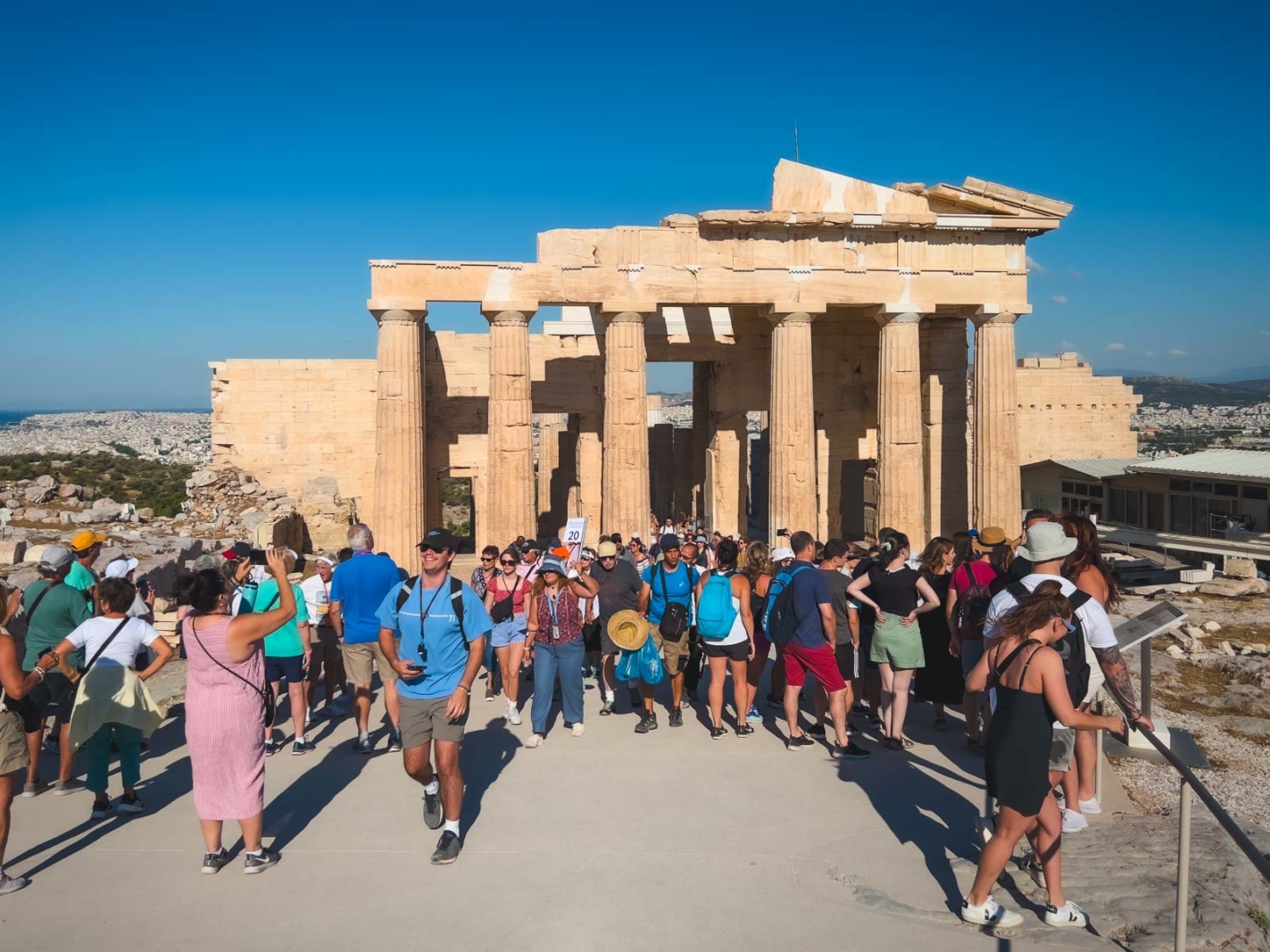
- Choose the Right Entrance: While most visitors use the main entrance on the west side, consider the lesser-known southeast entrance near the Acropolis Museum. This entrance typically has shorter lines, which can save you time.
- Wear Comfortable Shoes: The paths around the Acropolis are uneven and can be slippery especially the marble steps. Wear sturdy, comfortable shoes to navigate the terrain safely.
- Stay Hydrated: Athens can be hot, especially in the summer months. Bring a water bottle with you, as there are several refill stations around the site.
- Sun Protection Wear a hat and use sunscreen: The heat can be intense, especially in summer, with limited shade available. I personally wear a portable neck fan.
- Follow the Recommended Route: Start your visit at the Theatre of Dionysus, then move up to the Asclepieion and the Odeon of Herodes Atticus. Continue to the Propylaea, the monumental gateway that leads to the top of the Acropolis, where you can explore the Parthenon, the Erechtheion, and the Temple of Athena Nike. This route offers a logical progression through the site and ensures you don’t miss the highlights.
- Many original statues and artifacts were once part of the ancient buildings.
- Plan for the Sun: With limited shade available, wear sunscreen, a hat, and sunglasses to protect yourself from the sun.
- Capture the Best Views: For the best photos of the Acropolis, head to Areopagus Hill, located to the west of the Acropolis. This vantage point offers stunning views, especially at sunrise or sunset.
- Respect the Site: Remember that the Acropolis is not only a tourist attraction but also a significant cultural and historical site. Follow all posted signs and guidelines, and do not touch or climb on the ancient structures.
- Purchase Tickets in Advance: Buy your tickets online to avoid long lines at the ticket office. You can also consider purchasing a combination ticket, which includes entry to other historical sites in Athens.
- Hire a Guide or Use an Audio Guide: To fully appreciate the historical and cultural significance of what you’re seeing, consider a guided tour or an audio guide.
Beyond the Stones – Acropolis Museum
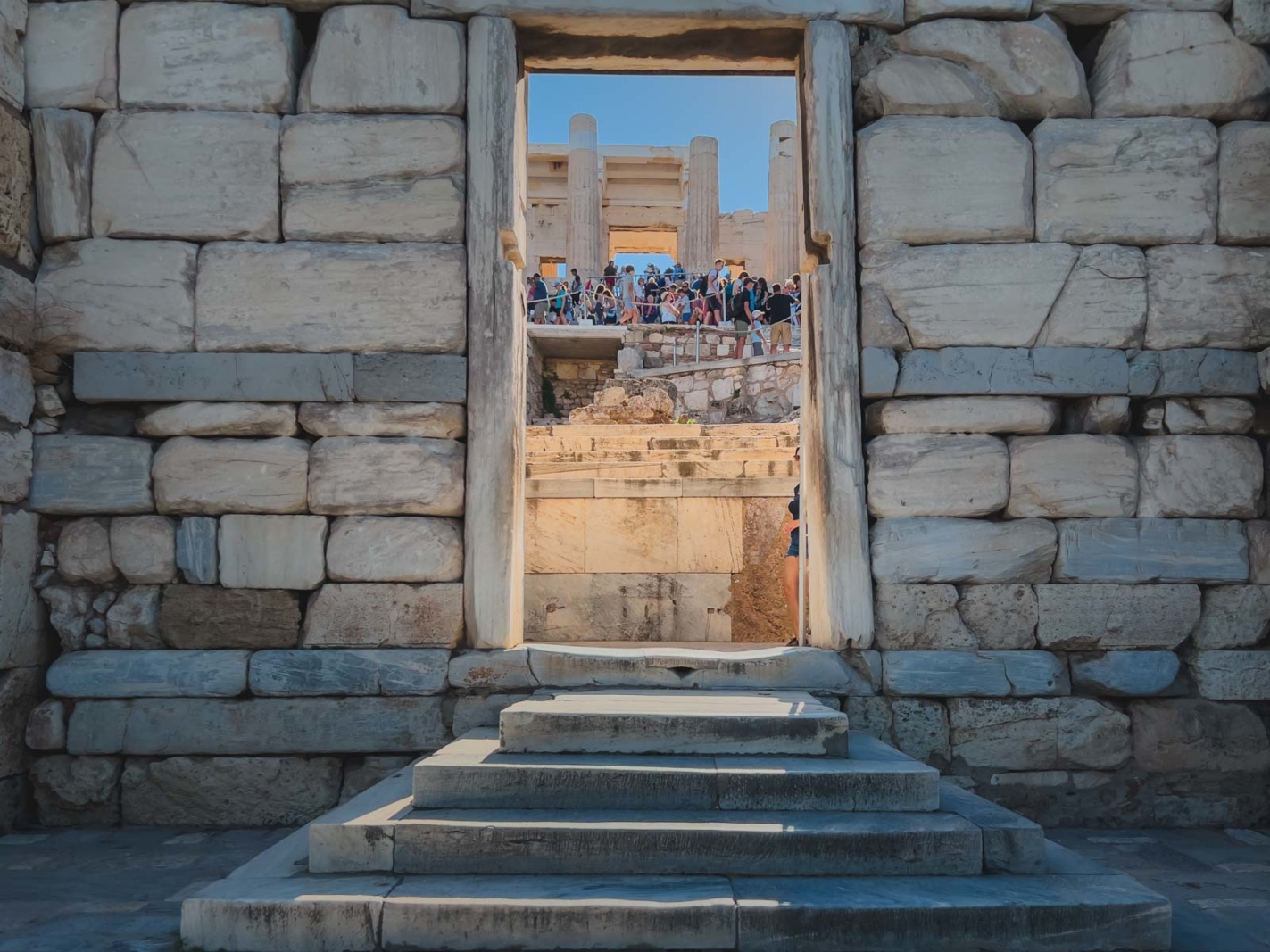
Visit the Acropolis Museum: To complement your visit and gain deeper insights into the history and significance of the structures you’ve seen, visit the Acropolis Museum. Located just a short walk from the Acropolis, the museum is often touted as one of the best museums in the world. It houses more than 3,000 priceless artifacts from the Athenian Acropolis and its surrounding slopes. The museum is also a beautiful building unto itself and is definitely worth a visit.
How to Get to the Acropolis and Parthenon

The most efficient route is via the Athens Metro, with the Acropolis station on the Red Line (Line 2) serving as your direct gateway. Emerging from the station, you’re a mere stone’s throw from the archaeological marvel, with clear signage guiding you to the entrance.
For those who prefer to soak in the city’s ambiance, a leisurely walk through the historic Plaka district reveals the layers of Athens’ rich tapestry, leading you to the foot of the Acropolis hill. Along the way, charming cafes and shops offer a taste of modern Greek culture amidst the shadows of history. Whether you choose the speed of the metro or the allure of a walk through Athens, the journey to the Acropolis is an integral part of the experience, seamlessly blending the city’s ancient past with its vibrant present, ensuring that every visitor can reach this testament to human ingenuity with ease and enjoyment.
Visiting the Acropolis is more than a walk among ruins; it’s a journey through history, art, and mythology. As you stand on this ancient ground, looking out over Athens, you’re not just a tourist—you’re a part of the ongoing story of one of the world’s oldest cities. With these tips, your visit to the Acropolis and the Parthenon will be as enriching as it is awe-inspiring. Welcome to the cradle of Western civilization.
Check out these travel guides about Athens and Greece to plan your travels.
- Where To Stay In Athens – A Guide To The Best Neighborhoods
- The Perfect One Day in Athens Itinerary – Your Guide to The City
- Where to Stay in Santorini: Best Hotels and Towns
- 25 Best Things to do in Santorini, Greece
- The Ultimate Guide to Costa Navarino, Grece
- Things to do in Meteora Greece – MORE THAN MONASTERIES
- 25 Interesting and Fun Facts About Greece
- Ultimate Greek Food Guide – Traditional Dishes to Eat in Greece
- Pelion Greece – Visiting the Unknown Paradise of Greece
- Best Things to do in Halkidiki, Greece
- 16 Delightful Things to do in Skiathos, Greece
- Best Places to Visit in Greece

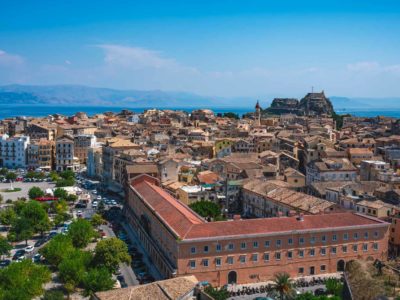
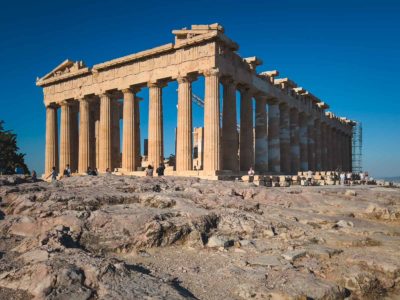

Good tips to follow. Visiting Athens in two weeks.
Excellent guide, Thank you. We actually going to Athens in a month time so this will come in hand. thanks